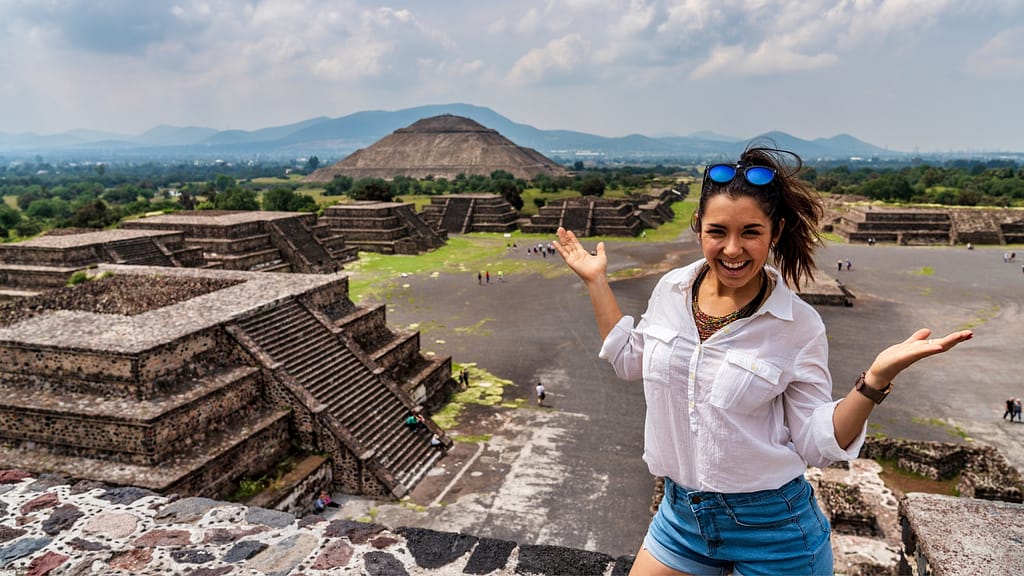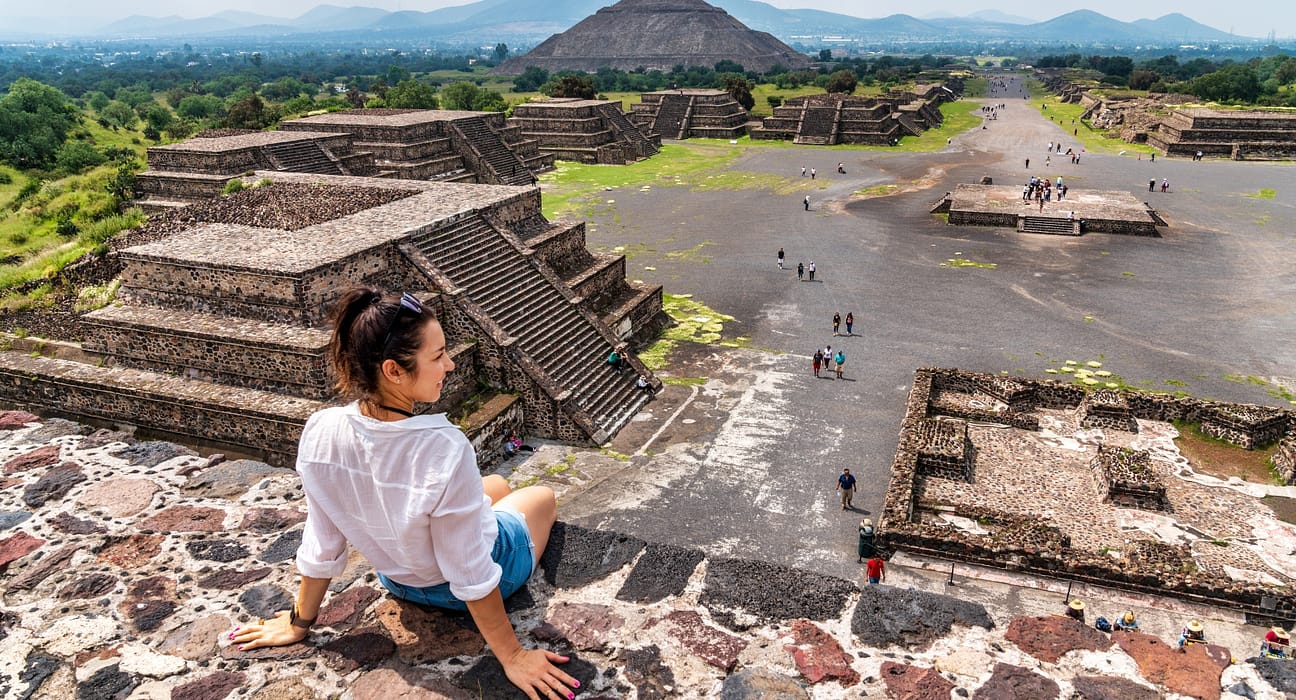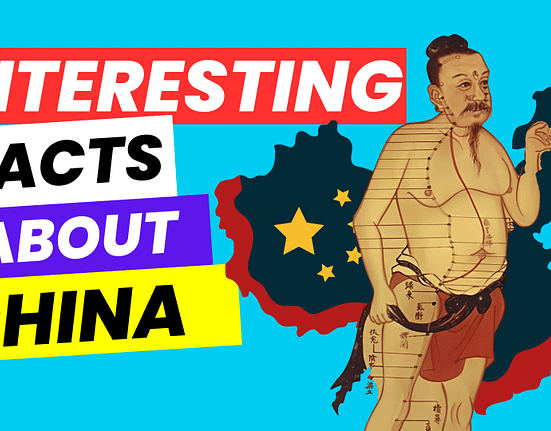Last updated on September 18th, 2024 at 12:35 am
Mexico is a country rich in history, culture, and geographical diversity.
From its ancient civilizations to its vibrant modern cities, Mexico offers a fascinating blend of traditions and innovations.
This blog post explores 50 interesting facts about Mexico, categorized into cultural, historical, geographical, economic, unique, and miscellaneous facts.
These insights will help you better understand this incredible country and its significance in the world.

Cultural Facts
- UNESCO Cuisine: In 2010, Mexican cuisine became the first in the world to be recognized by UNESCO as an Intangible Cultural Heritage. This recognition underscores the importance of traditional cooking methods, local ingredients, and the cultural significance of food in Mexico.
- Mariachi Music: Mariachi music is another UNESCO-recognized aspect of Mexican culture. Originating from the state of Jalisco, mariachi bands typically consist of violins, trumpets, guitars, and other instruments, playing lively tunes that are synonymous with Mexican celebrations.
- Día de los Muertos: The Day of the Dead (Día de los Muertos) is a unique Mexican holiday that honors deceased loved ones. Celebrated on November 1 and 2, it combines indigenous beliefs with Catholic traditions, showcasing vibrant altars adorned with flowers, food, and photographs.
- Mole Sauce: Mole is a traditional Mexican sauce made with a complex blend of over 20 ingredients, including chocolate, spices, and chili peppers. It is often served with meats and showcases the depth of flavors in Mexican cuisine.
- Poinsettia Plants: Poinsettias are native to Mexico and are often associated with Christmas celebrations. The vibrant red and green colors of the plant have made it a popular holiday decoration worldwide.
- La Bamba: “La Bamba,” a traditional Mexican folk song, gained international fame through Ritchie Valens’ 1958 rock version. It highlights the cultural richness of Mexican music and has been embraced globally.
- Tequila and Mezcal: Both tequila and mezcal are iconic spirits that originated in Mexico from the agave plant. Tequila is produced primarily in the region surrounding the town of Tequila, while mezcal can be made from various types of agave across different regions.
- Cinco de Mayo: While widely celebrated in the United States, Cinco de Mayo is not Mexico’s Independence Day. Instead, it commemorates the Mexican army’s victory over French forces at the Battle of Puebla on May 5, 1862.
- Chichen Itza: The ancient Mayan ruins of Chichen Itza are one of the New Seven Wonders of the World. The site features impressive structures like El Castillo (the Pyramid of Kukulcán), which reflects the astronomical knowledge of the Mayans.
- Great Pyramid of Cholula: Located in Puebla, the Great Pyramid of Cholula is considered the largest pyramid in terms of volume in the world. Its base covers an area larger than that of the Great Pyramid of Giza.
Historical Facts
- Independence Day: Mexico declared its independence from Spain on September 16, 1810. The event is remembered annually with parades and celebrations throughout the country.
- First University: Established in 1551, the Royal and Pontifical University of Mexico was the first university in North America. It played a crucial role in shaping education in the region.
- Mexican Revolution: Beginning in 1910, the Mexican Revolution is considered one of the first social revolutions in history. It aimed to address social inequalities and land reform issues.
- Constitution of 1917: This constitution introduced significant social reforms related to land ownership, labor rights, and education. It remains in effect today and serves as a foundation for Mexican law.
- Grito de Dolores: The Grito de Dolores is a call to arms made by Miguel Hidalgo y Costilla that initiated the Mexican War of Independence. Every year on September 15, this event is reenacted by the president in a ceremony known as “El Grito.”
- Asteroid Impact: The Yucatán Peninsula was the site of an asteroid impact that led to the extinction of the dinosaurs approximately 66 million years ago. This event significantly shaped Earth’s biological history.
- First Color TV Transmission: The first color television transmission occurred in Mexico City in 1946, marking a technological milestone for broadcasting in Latin America.
- Nobel Prize Winners: Three Mexicans have been awarded the Nobel Prize. These laureates include literature winners Octavio Paz and Mario Molina (Chemistry) and José Mario Muriño (Peace), highlighting Mexico’s contributions to global knowledge.
- Sinking City: Mexico City is sinking at a rate of approximately 50 centimeters (about 20 inches) per year due to groundwater extraction from underground aquifers.
- Plaza de Toros: The Plaza de Toros in Mexico City is the largest bullring in the world, with a seating capacity of over 41,000 spectators. It showcases Mexico’s longstanding tradition of bullfighting.
Geographical Facts
- Land Area: Covering approximately 761,610 square miles (1,973,000 square kilometers), Mexico is the 13th largest country by land area and features diverse landscapes ranging from mountains to beaches.
- Biodiversity: Mexico is one of the most biodiverse countries on Earth, home to a vast array of plant and animal species due to its varied climates and ecosystems.
- Cenotes: Cenotes are natural sinkholes that expose groundwater underneath. In the Yucatán Peninsula, they were considered sacred portals to the underworld by the ancient Maya civilization.
- Monarch Butterflies: The Monarch Butterfly Biosphere Reserve in Michoacán is a UNESCO World Heritage site where millions of migratory monarch butterflies spend their winter months.
- Volcanoes: Mexico has over 2,000 volcanoes, including some of the most active ones in North America. Notable volcanoes include Popocatépetl and Colima.
- Crystal Caves: The Cave of the Crystals in Naica, Chihuahua holds some of the largest selenite crystals in the world, with some measuring up to 12 meters (39 feet) long.
- Teotihuacán: Once the largest city in pre-Columbian America, Teotihuacán is famous for its monumental pyramids and urban planning, reflecting advanced ancient engineering.
- Monte Albán: Located near Oaxaca City, Monte Albán was one of the first major cities in Mesoamerica and served as a center for Zapotec culture and governance.
- Great Lakes: Lake Chapala, situated in Jalisco, is the largest lake in Latin America and is known for its diverse wildlife and recreational activities.
- Deserts: The Sonoran Desert is one of the largest deserts in North America and boasts high biodiversity with a wide variety of plants and animals adapted to arid conditions.
Economic Facts
- Largest Silver Producer: Mexico is recognized as the world’s largest producer of silver, contributing significantly to its economy through mining activities.
- Beer Exporter: With famous brands like Corona and Modelo, Mexico is also the world’s largest exporter of beer, showcasing its rich brewing tradition.
- Economy: With a Gross Domestic Product (GDP) based on Purchasing Power Parity (PPP) of approximately $3.43 trillion, Mexico ranks as the 12th largest economy globally.
- Chihuahua Dog: Named after a Mexican state, the Chihuahua holds the title for being the smallest dog breed in the world and has gained popularity as a household pet worldwide.
- Tourism: Mexico attracts over 42 million international visitors annually, making it one of the top tourist destinations globally due to its rich cultural heritage and natural beauty.
Unique Facts
- Axolotl: The axolotl is a unique amphibian native only to Mexico known for its remarkable regenerative abilities. This creature has become an icon for conservation efforts due to its endangered status.
- Olmec Heads: The Olmec civilization is famous for its colossal stone head sculptures that date back over 3,000 years; some weigh up to 40 tons and are believed to represent rulers or important figures.
- Zapotec Observatory: The ancient Zapotec civilization built one of the earliest known observatories at Monte Albán to study celestial events and align architecture with astronomical phenomena.
- Mayan Calendar: The Mayan calendar was more accurate than many European calendars used at that time, demonstrating advanced mathematical knowledge among ancient civilizations.
- Water Management: Tenochtitlan, the capital city of the Aztec Empire, had one of the earliest complex water management systems that included canals and aqueducts for irrigation purposes.
- Mixtec Gold: The Mixtec civilization was renowned for its exquisite gold jewelry and intricate sculptures created using advanced metalworking techniques.
- El Castillo: The pyramid known as El Castillo at Chichen Itza is aligned with astronomical events; during equinoxes, shadows create an illusion resembling a serpent slithering down its steps.
- Aztec Education: The Aztecs had one of the earliest systems of mandatory education for children across social classes—a rarity in ancient societies that contributed to high literacy rates among their population.
- San Juan de Ulúa: This fortress located in Veracruz played a critical role during multiple historical conflicts including the Mexican-American War and served as a strategic military outpost.
- Cultural Festivals: Mexico hosts numerous vibrant festivals throughout the year such as Guelaguetza in Oaxaca and Día de los Muertos celebrations nationwide that showcase traditional music, dance, art, and cuisine.
Miscellaneous Facts
- Largest Population: With approximately 129 million people, Mexico ranks as the 10th most populous country globally; it features diverse communities with rich cultural backgrounds.
- First Printing Press: The first printing press established in North America was set up in Mexico City around 1539; this innovation played a critical role in spreading literacy and printed materials throughout Spanish colonies.
- Chapultepec Castle: Located within Chapultepec Park in Mexico City, this historic castle served as royal residence during various periods; it remains one of only three royal castles in North America today.
- Tacos: Tacos are an essential part of Mexican cuisine; they come in countless varieties filled with ingredients ranging from meats to vegetables and are enjoyed by locals and visitors alike.
- Cultural Diversity: Mexico officially recognizes 287 languages spoken across its territory; this linguistic diversity reflects the country’s rich indigenous heritage alongside Spanish influences.
These 50 interesting facts about Mexico provide an insightful glimpse into Mexico’s rich tapestry woven from its history, culture, geography, economy, and unique characteristics that continue to captivate people around the world. Understanding these elements can deepen our appreciation for Mexico as a nation that has significantly contributed to global culture and heritage while preserving its unique identity through time.









